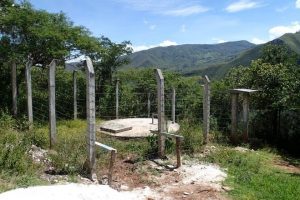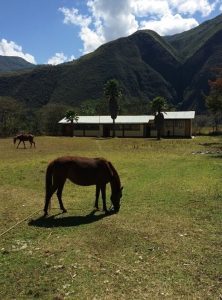This project is made possible through the partnership of WATER CHARITY and the NATIONAL PEACE CORPS ASSOCIATION. ![]()
Location
This project summary has been redacted for security reasons to omit the specific project location.
Annex Xxxxxx, District Colcamar, Region Amazonas, Peru
 Community Description
Community Description
There are seven annexes in the district of Colcamar but this project will focus on one, in particular, Xxxxxx. The community consists of 30 families, a small health post, an elementary school, a church, and a small town square. The people are incredibly welcoming and open.
The town is closer to the highway than to the district capital of Colcamar, and therefore it has been easier for them to send their children to the regional capital for high school. The quality of education is slightly more advanced in the regional capital, and after receiving their education many students come back and have elevated the overall understanding and education of the town.
As one of the smallest annexes, they often feel as if the municipality has forgotten their needs, so they work hard to provide for themselves. The members of the water committee were changed in 2016 and this new group has proven to be very animated about their jobs. They were able to convince the community to pay for their water service for the first time.
Problem Addressed
The water system of the town was constructed more than 20 years ago. Although an NGO came to the annex five years ago, little was done to improve healthy water coverage. The NGO constructed a new reservoir, but they left the rest of the system without improvements, without a chlorination system and without training the community in basic maintenance.
The town is drinking crude water straight from the source, as there is no treatment system. This leaves the people susceptible to any and all bacteria and pathogens that are in their drinking water. The members of the community know they have been drinking untreated water but do not fully understand the consequences of that.
The water committee has shown an interest in bringing their people treated water but do not know how to go about it on their own as they have not been trained by the municipality, and largely working by themselves.
 Project Description
Project Description
This project is to provide a safe and secure source of water for every member of the community through the installation of a chlorination system for water purification.
A drip system chlorination system will be installed in the reservoir, along with a small house structure to protect the system from the elements and thieves.
A large (600 L) tank will be placed on top of the reservoir, filled with a mother solution of concentrated Cloro. There is a flotation apparatus that sits on the mother solution and feeds the Cloro down through a tube out of the tank that will enter the reservoir at a controlled drip-rate.
This system is the current model promoted by the Peruvian government and NGOs in the region. It works best with smaller water systems, allows the operator of the system to reduce trips to the reservoir (only have to refill the mother solution every 2 or 3 weeks), and is easy to implement and to train people on its proper use and maintenance.
The PCV and a representative from the municipality will provide 6 pieces of training to the water committee of the town in themes of administration and system operation and maintenance. After this training, the water committee will become a more autonomous entity.
The PCV and municipality representative will also hold 3 town hall meetings to discuss the project and how it is advancing as well as provide information as to the importance of drinking treated water.
Having the water committee help with the installation will give them a sense of ownership. The PCV will visit the town weekly (for 6 weeks) after the installation of the chlorination system to monitor that it is functioning correctly and the Cloro level is sufficient for the community.
Project Impact
125 people will benefit from the project.
Peace Corps Volunteer Directing Project
Sally Clark
Monitoring and Maintenance
With weekly training in themes such as administration, operation, and maintenance of a water system, the water committee will improve their abilities and their confidence. A short diagnostic will take place at the beginning of the project and at the very end to evaluate specific knowledge that has been learned by the members.
This project has been funded through the generosity of the Paul Bechtner Foundation.
This project has been completed. To read about the conclusion, CLICK HERE.